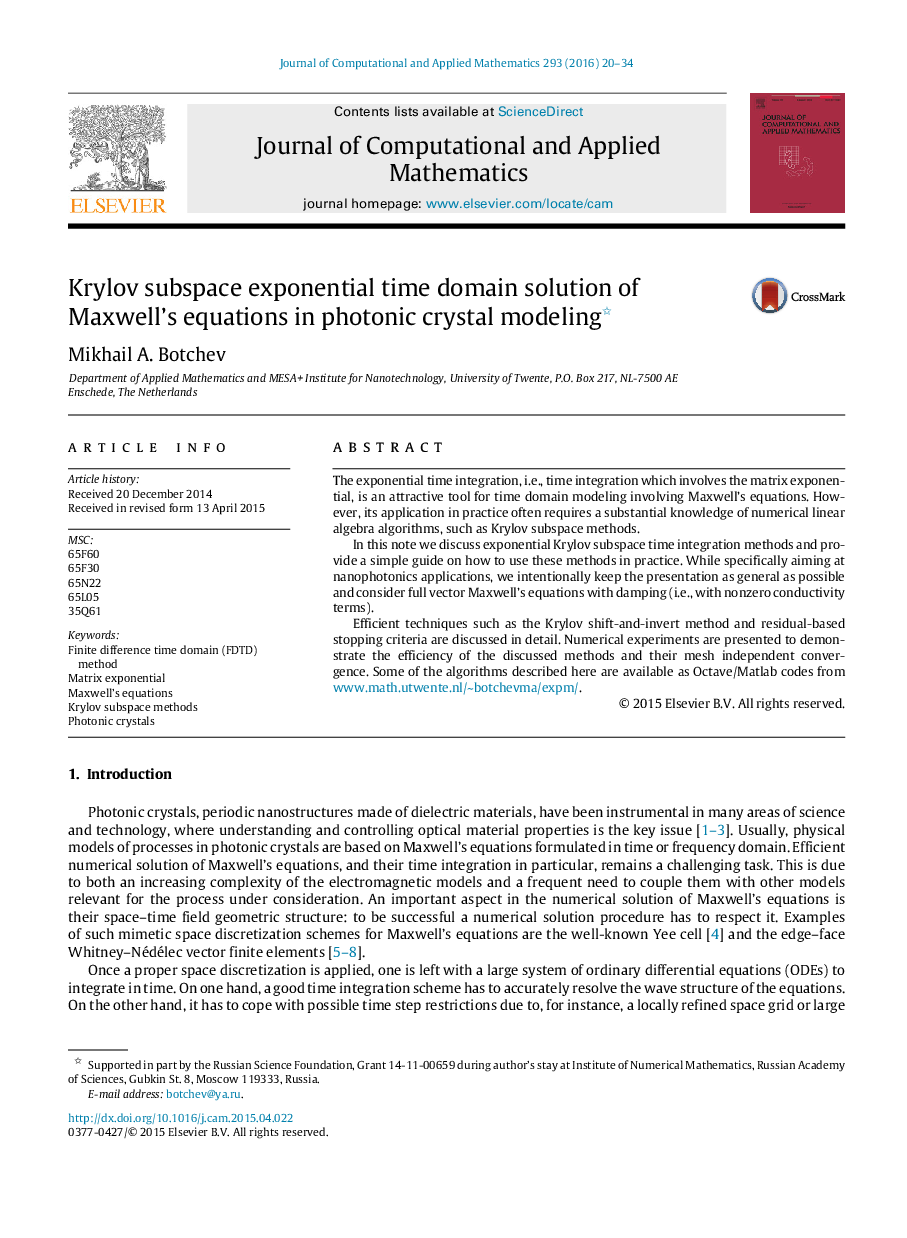| Article ID | Journal | Published Year | Pages | File Type |
|---|---|---|---|---|
| 4638366 | Journal of Computational and Applied Mathematics | 2016 | 15 Pages |
The exponential time integration, i.e., time integration which involves the matrix exponential, is an attractive tool for time domain modeling involving Maxwell’s equations. However, its application in practice often requires a substantial knowledge of numerical linear algebra algorithms, such as Krylov subspace methods.In this note we discuss exponential Krylov subspace time integration methods and provide a simple guide on how to use these methods in practice. While specifically aiming at nanophotonics applications, we intentionally keep the presentation as general as possible and consider full vector Maxwell’s equations with damping (i.e., with nonzero conductivity terms).Efficient techniques such as the Krylov shift-and-invert method and residual-based stopping criteria are discussed in detail. Numerical experiments are presented to demonstrate the efficiency of the discussed methods and their mesh independent convergence. Some of the algorithms described here are available as Octave/Matlab codes from www.math.utwente.nl/~botchevma/expm/.
